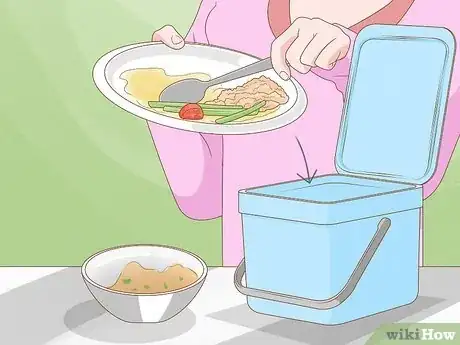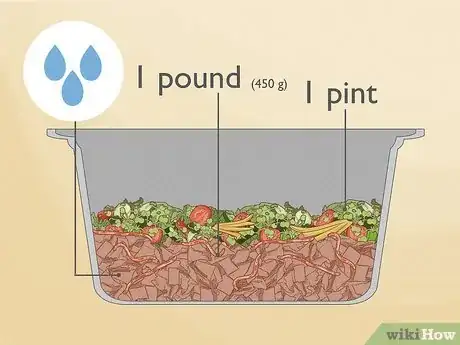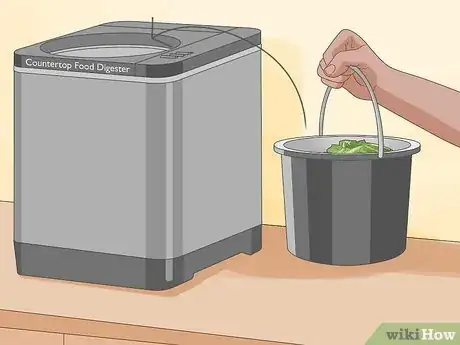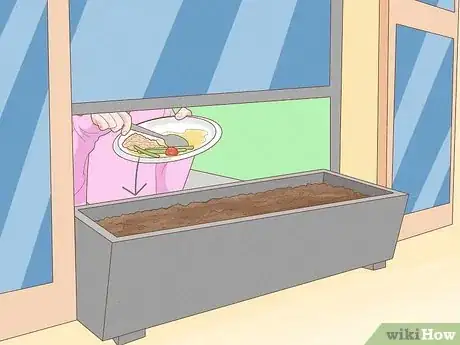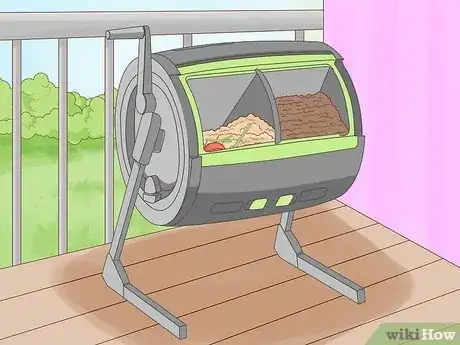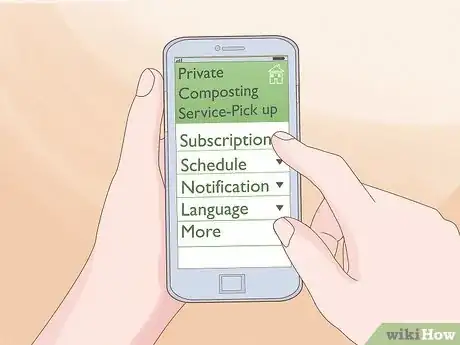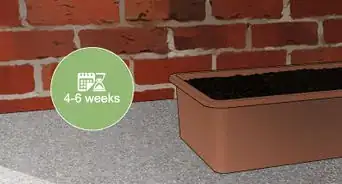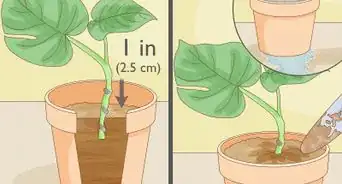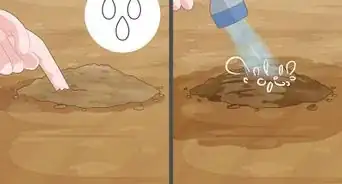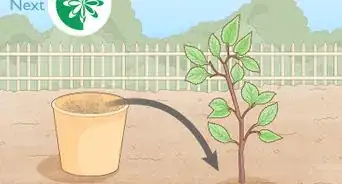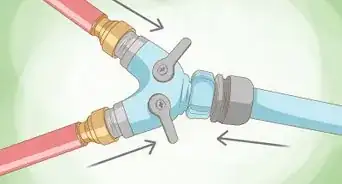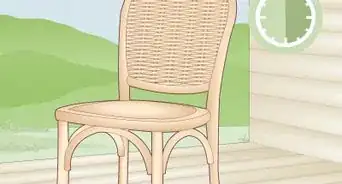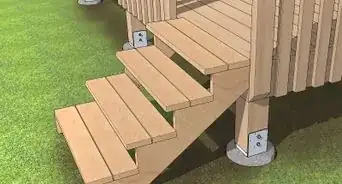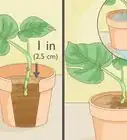This article was co-authored by Artemisia Nursery and by wikiHow staff writer, Jessica Gibson. Artemisia Nursery is a retail plant nursery in Northeast Los Angeles specializing in California native plants. Artemisia Nursery is a worker-owned small business with plans to become a worker-owned cooperative. In addition to California native plants, Artemisia Nursery offers a selection of succulents, heirloom veggie and herb starts, house plants, pottery, and gardening tools and supplies. Drawing on the knowledge of the founders, Artemisia Nursery also offers consultations, designs, and installations.
There are 10 references cited in this article, which can be found at the bottom of the page.
This article has been viewed 14,817 times.
When you think of composting, you might picture stinky piles that take up a ton of room. If you're an apartment-dweller, you may be wondering if you can compost without a yard. Fortunately, there are tons of ways to compost that won't make your apartment smelly or take up a lot of room. We'll walk you through several methods—you're sure to find one that will work for your place!
Steps
Expert Q&A
-
QuestionHow do I get rid of the smell in my compost?
 Artemisia NurseryArtemisia Nursery is a retail plant nursery in Northeast Los Angeles specializing in California native plants. Artemisia Nursery is a worker-owned small business with plans to become a worker-owned cooperative. In addition to California native plants, Artemisia Nursery offers a selection of succulents, heirloom veggie and herb starts, house plants, pottery, and gardening tools and supplies. Drawing on the knowledge of the founders, Artemisia Nursery also offers consultations, designs, and installations.
Artemisia NurseryArtemisia Nursery is a retail plant nursery in Northeast Los Angeles specializing in California native plants. Artemisia Nursery is a worker-owned small business with plans to become a worker-owned cooperative. In addition to California native plants, Artemisia Nursery offers a selection of succulents, heirloom veggie and herb starts, house plants, pottery, and gardening tools and supplies. Drawing on the knowledge of the founders, Artemisia Nursery also offers consultations, designs, and installations.
Plant Nursery & Garden Shop Make sure it gets plenty of airflow! Compost systems without good aeration lead to anaerobic decomposition, which is very, very stinky. Compost systems with good aeration use aerobic decomposition, which smells a lot better.
Make sure it gets plenty of airflow! Compost systems without good aeration lead to anaerobic decomposition, which is very, very stinky. Compost systems with good aeration use aerobic decomposition, which smells a lot better.
References
- ↑ https://www.thekitchn.com/best-compost-bins-23019461
- ↑ Artemisia Nursery. Plant Nursery & Garden Shop. Expert Interview. 7 August 2020.
- ↑ https://extension.uga.edu/content/dam/extension-county-offices/bartow-county/mgev/trainees/Composting.pdf
- ↑ Artemisia Nursery. Plant Nursery & Garden Shop. Expert Interview. 7 August 2020.
- ↑ https://www.natureswayresources.com/nl/176IndoorComposting.pdf
- ↑ Artemisia Nursery. Plant Nursery & Garden Shop. Expert Interview. 7 August 2020.
- ↑ Kathryn Kellogg. Sustainability Specialist. Expert Interview. 28 June 2019.
- ↑ https://www.epa.gov/recycle/how-create-and-maintain-indoor-worm-composting-bin
- ↑ Artemisia Nursery. Plant Nursery & Garden Shop. Expert Interview. 7 August 2020.
- ↑ https://www.consumerreports.org/food-waste/how-to-compost-in-your-apartment-a4975407056/
- ↑ https://www.apartmenttherapy.com/composting-for-beginners-36918830
- ↑ Kathryn Kellogg. Sustainability Specialist. Expert Interview. 28 June 2019.
- ↑ https://www.apartmenttherapy.com/composting-for-beginners-36918830
- ↑ https://sharewaste.com/
- ↑ https://www.eugene-or.gov/3372/Residential-Food-Waste-Collection
- ↑ Kathryn Kellogg. Sustainability Specialist. Expert Interview. 28 June 2019.
